Fujifilm X-S10 review
Fuji’s retro look range goes ever slightly more modernist. But can this ‘consumer’ model justify its high-ish pric

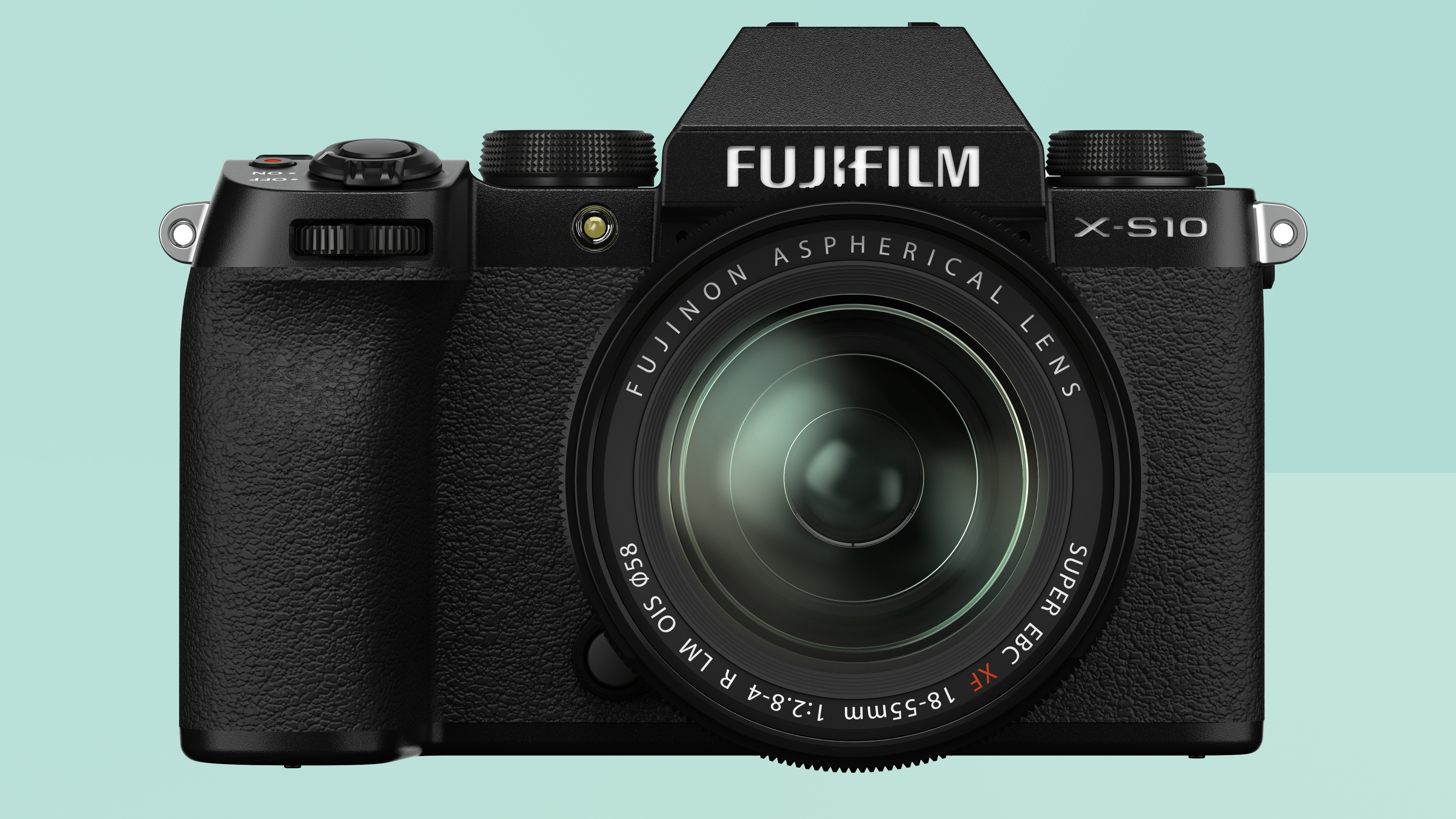
As usual with Fuji, the X-S10 holds appeal for a couple of markets; namely a mainstream one via first time mirrorless converts with relatively deep pockets who want to get more hands-on control than their smartphone will allow, plus existing photo enthusiasts who want a relatively straightforward option for their camera bag and everyday use.
-
+
Solid build quality
-
+
Mix of high performance yet user-friendly features and operation
-
+
Stunningly detailed images achievable
- +
- +
-
-
Expensive
-
-
The rear panel joystick which replaces a four-way control pad is small and fiddly
-
-
Nose snubs against the LCD when using the eye-level viewfinder
Why you can trust T3

Fujifilm has done well with digital cameras that marry the latest autofocus technologies and swift operational speeds to retro styling that triggers pangs of nostalgia in its prospective, largely photo enthusiast audience.
While its black livery and leather-look surface and grip are not a massive departure when compared to models like its maker’s previously released X-T30 and X-T4 cameras, the new X-S10 is more modernist in looks and feel – similar to an E-mount Sony camera in fact.
It achieves this contemporary styling while still retaining throwback Fuji features including its Film Simulation modes and fun retro effects, such as pinhole camera-like ‘toy camera’ or tilt-and-shift lens ape-ing miniaturization mode.
Unsurprisingly the camera handles like a model that has first-time mirrorless users stepping up from a smartphone in mind, complete with touch screen operation offered. Yet it's not inconsiderable pricing places it very much in enthusiast territory. So is this an entry-level model with ideas above its station?
As with its maker’s existing X-T30, the core specification here is a 26-megapixel resolution provided via an APS-C sized sensor, that would at one time only be found in a much bulkier DSLR.
But with the removal of a DSLR’s traditional mirror mechanism – hence why cameras including the X-S10 are referred to as mirrorless models – this one is compact enough that even with an 18-55mm zoom lens bolted on the front it can just about be squeezed into a roomy jacket pocket or man bag.
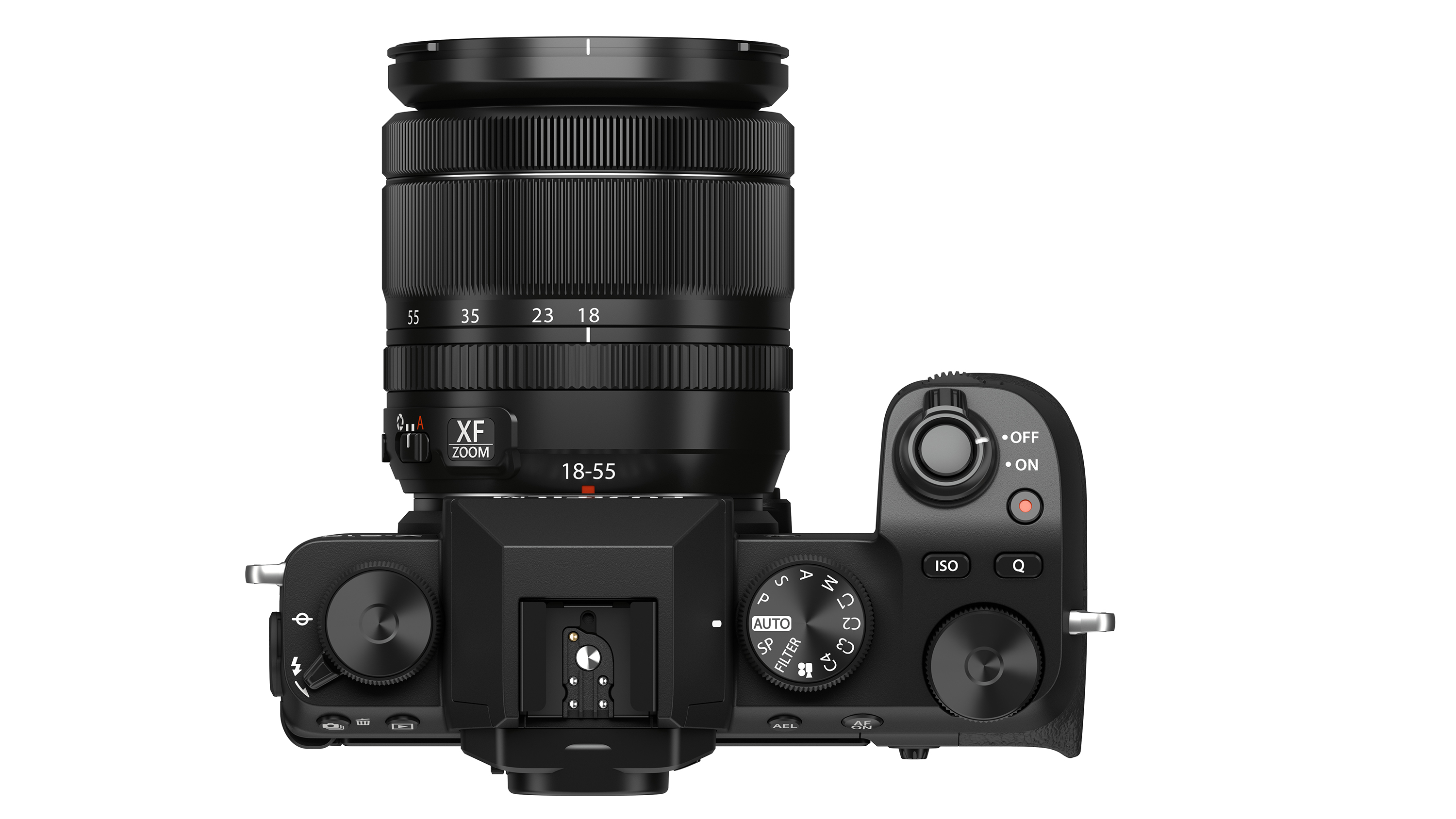
Fujifilm X-S10 review : Design and Handling
The Fuji X-S10 allows for photos and videos to be composed and reviewed either via a traditional eye-level camera viewfinder (EVF), or fold-out, 180° rotating LCD screen directly below – which means your nose presses up against said screen when using the EVF. This monitor can, however, be turned to face the subject for anyone looking to shoot selfies or demo videos for YouTube and the ilk.
Get all the latest news, reviews, deals and buying guides on gorgeous tech, home and active products from the T3 experts
We get the familiar top plate dials here too, with no fewer than three control wheels falling under the finger or thumb for scrolling through images, enlarging them, or generally getting to the features we need in a hurry. For more precise selections, a titchy and so inevitably fiddly joystick is provided on the backplate instead of a familiar four-way control pad.
It may look neater, but we found ourselves using this quite gingerly. We were sent the X-T4 in black with a chunky and prominent 16-80mm zoom, such a lens specification meaning that it is as adept at capturing landscapes at its widest setting as it is portraits and close-ups at its maximum telephoto setting.
However, twinning it with the already solidly built camera body does make for a combination that is weightier and chunkier overall than both the X100V and X-T30 models that sit below it in Fuji’s range. That said, it is still a more compact and more portable proposition than a mid-range digital SLR with an equivalent lens reach would offer.
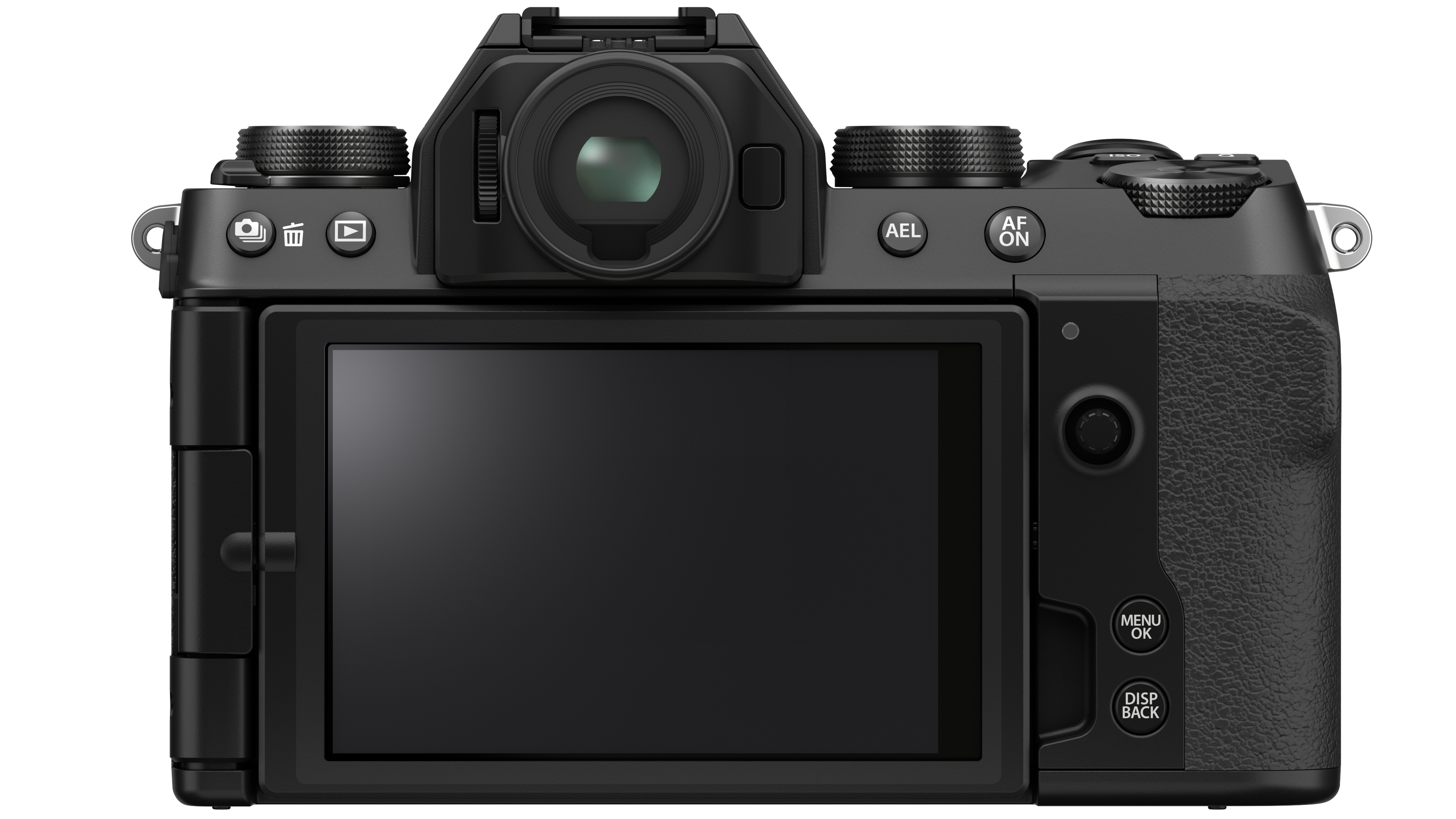
With a magnesium alloy build, one of Fuji’s pitches for this camera is that it is a lightweight option. But at 450g it actually belies that by feeling robust and chunky in the palm.
Too small joystick aside, build quality is excellent and the aforementioned dials have just the right amount of give. The largest and most prominent sits next to the camera’s viewfinder and is for selecting shooting modes, which here sees the usual Program, Aperture Priority, Shutter Priority, and Manual settings joined by a generous four custom modes, an auto mode, camera filter, and video mode.
This sort of set up will be familiar to anyone who’s used a consumer-level DSLR or indeed point and shoot digital camera of old and saves otherwise having to dig into menu screens to find such features.
Fujifilm X-S10 Review: Features
While 26-megapixel stills is the headline specification here, the Fuji X-S10 offers users the expected 4K resolution video at a standard 30 frames per second capture rate. It betters the X-T30 slightly in alternatively offering Full HD video up to 240fps, for anyone looking to shoot sports or action footage and have it replayed back 10x slower than usual to study every physical detail.
Another real plus in helping to avoid camera shake and resultant image blur when shooting handheld without flash is body integral image stabilization. Handy, as there’s no pop-up illumination built-in here, just a vacant hot shoe for attaching an optional accessory flash.
Steady shooting is also a big plus, given that the camera can achieve capture speeds, again for those action sequences, of 8fps using its mechanical shutter, or up to 30fps if using its electronic shutter. Unlike more professional cameras we get a single rather than double SD card slot, but at its sub-£1000 price point that’s hardly a deal-breaker.
The Fuji X-T4 retains the X-T3’s sensor and processor – two of the key camera elements that are normally swapped out and updated for successive generations. So what’s changed or been enhanced here?
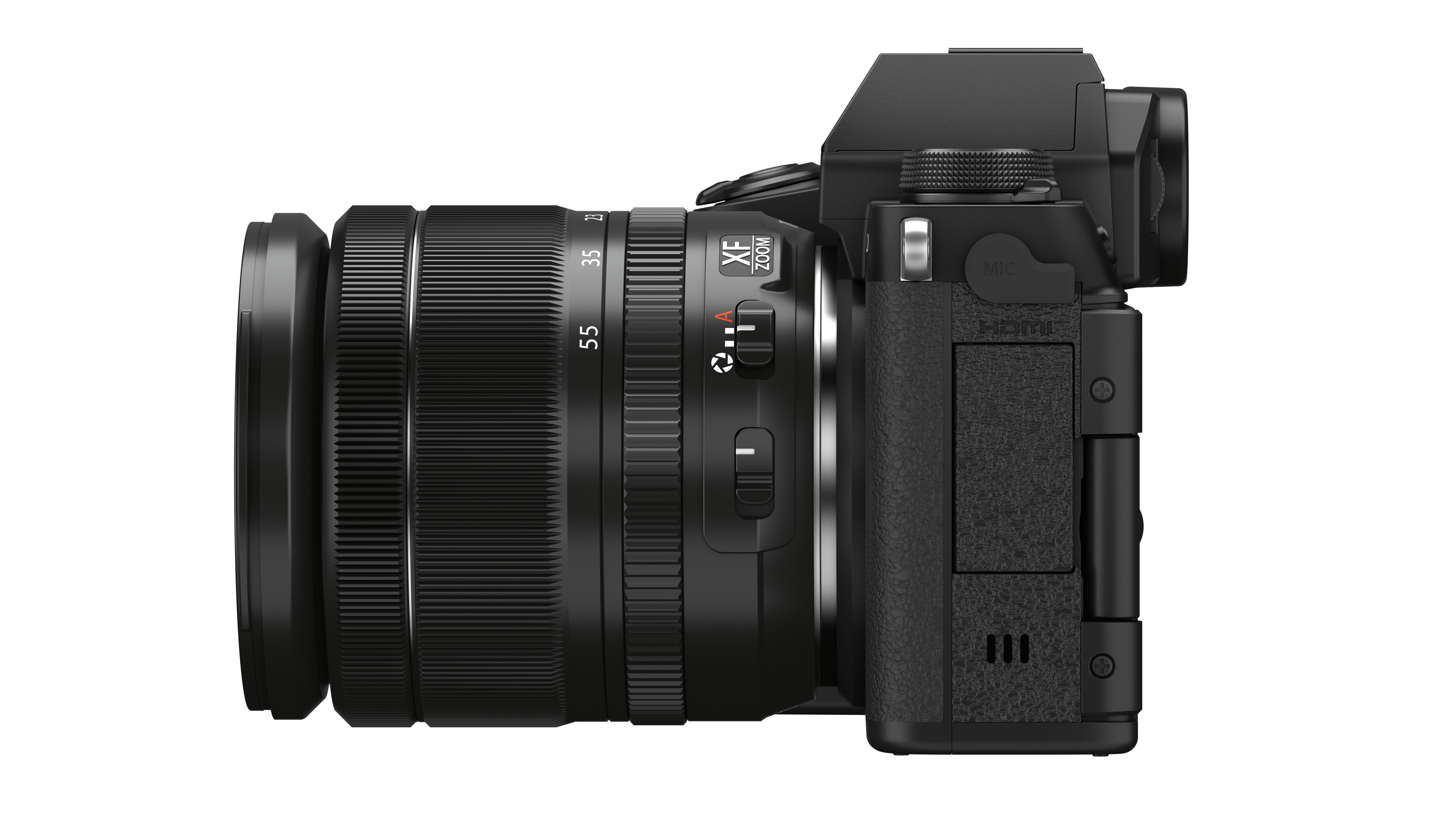
We’ve already covered the new shutter and built-in image stabilization unit in our introduction. Like most successive generations of digital cameras, additions to these include the fact that the camera’s autofocus performance has also been ramped up, improved in the areas of eye and face detection, and now being more accurate at tracking moving subjects.
Fittingly, given the ‘4’ in the model’s name, the X-T4 can also deliver us 4K resolution video, here up to a respectably cinematic 60fps. Alternatively, we are able to get creative at Full HD resolution thanks to a whopping 240fps capture speed for extreme slow-motion results. Perfect for when you want to capture every movement in sports!
Given such data-hungry demands, the X-T4 thankfully has two available SD card slots beneath a flap on its flank, and we’re able to record to them at the same time.
Fujifilm X-S10 Review: Performance
High end, but user friendly is the story of Fuji’s X-S10. While there is the usual gamut of small function buttons on the camera top plate and back, the easiest and fastest way to use this camera is simply to turn the top dial to the ‘auto’ setting, pick it up and point and shoot.
Luckily we found the camera’s autofocus is laser-like in its accuracy, picking up on the face of a squirrel on a tree, for example, some feet away. So even if your subject is fairly small and moving, the X-S10 can pick it out.
Officially, Fuji claims the camera is, in some cases, as quick to find focus as a blink-of-an-eye 0.02 seconds.
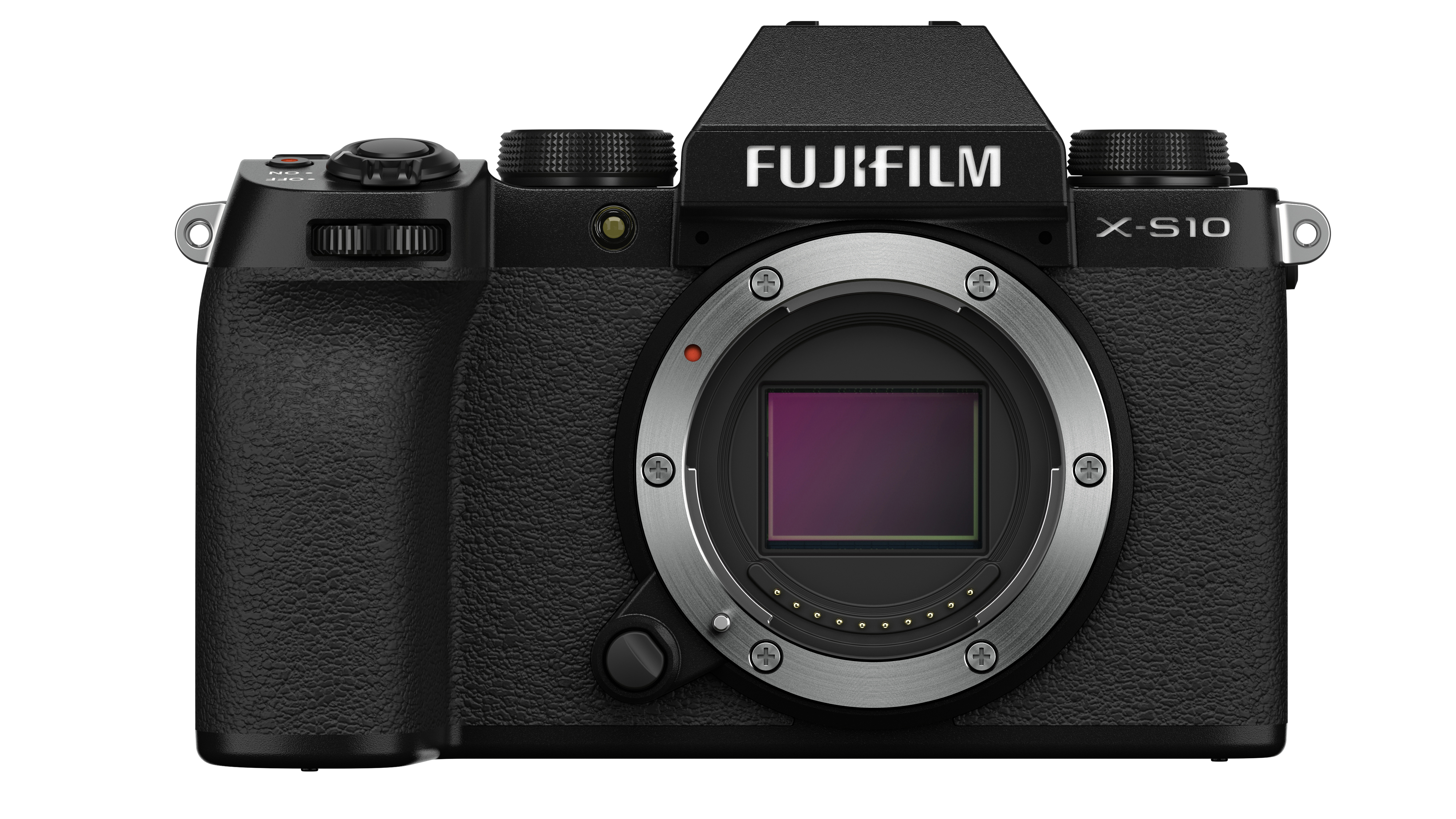
Also speeding up operation is the fact that the electronic viewfinder immediately activates when it detects an eyeball in the vicinity, and switches off the larger touch screen below without further button presses being required.
This also avoids your nose bumping up against the LCD and inadvertently resulting in a picture being taken. As with other models in the series, a deliberate finger tap on the screen will direct the AF to that particular point and simultaneously fire off a shot.
Fujifilm X-S10 Review: image samples
We enjoyed playing with both the filter effects, accessed with a turn of the top plate mode dial and Fuji’s Film Simulation offerings. Our reliable fallback among these settings is the Velvia roll film ape-ing option, which boosts saturation, really bringing out the blues and greens in landscape scenes to stunning effect.
The f/2.8-4 18-55mm kit lens we had attached manages to hold detail commendably into the corners of the frame. And, when used at maximum telephoto/ full zoom setting, we managed to achieve defocused backgrounds that isolated our subject and prevented any background distraction, which is perfect for portraiture. In short, then, the Fuji X-S10 is something of an all-rounder.


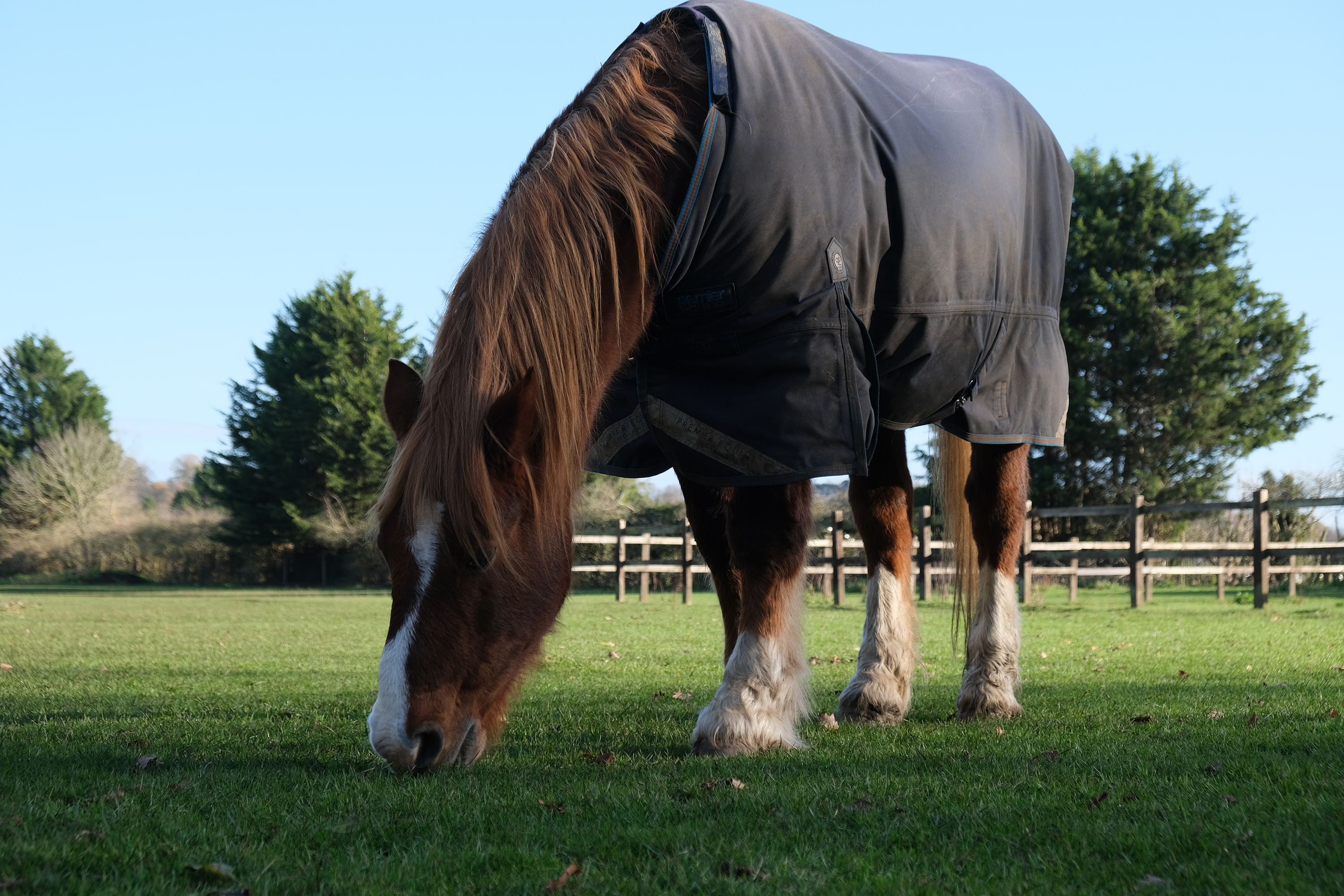




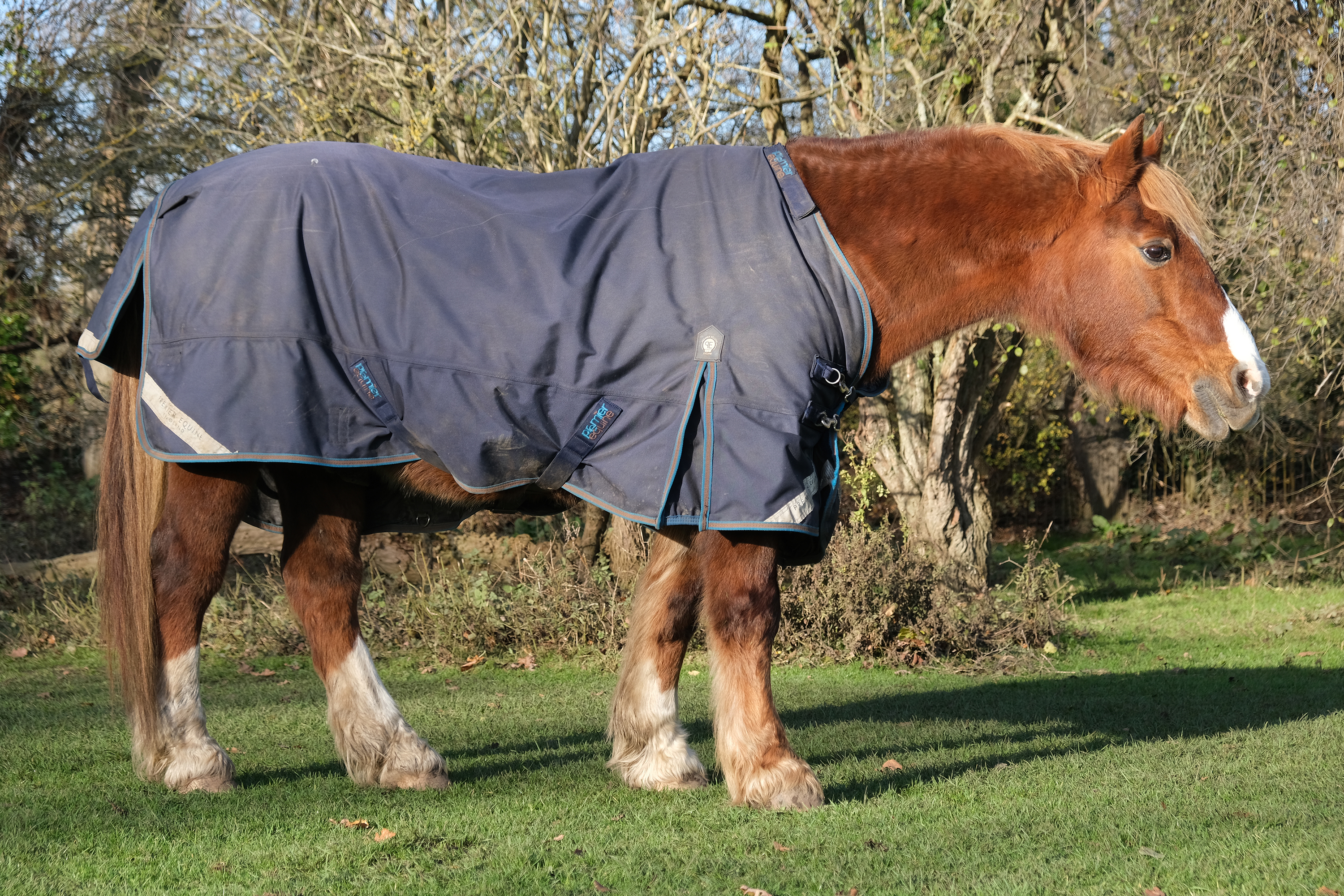






Fuji X-T4 Review: Verdict
As usual with Fuji, the X-S10 holds appeal for a couple of markets; namely a mainstream one via first time mirrorless converts with relatively deep pockets who want to get more hands-on control than their smartphone will allow, plus existing photo enthusiasts who want a relatively straightforward option for their camera bag and everyday use.
Though we personally prefer the handling of the same manufacturer’s X-T30 compact, with its blend of manual and auto operation and traditional photographer-friendly features, dials and levers, the conclusion here is that the X-S10 offers something for everyone.
Liked this?
- Best instant camera
- Best travel camera
- Best camera for kids
- Best entry-level camera
- Best cheap full-frame camera

Gavin Stoker has been writing about photography and technology for the past 20 years. He currently edits the trade magazine British Photographic Industry News - BPI News for short - which is a member of TIPA, the international Technical Imaging Press Association.